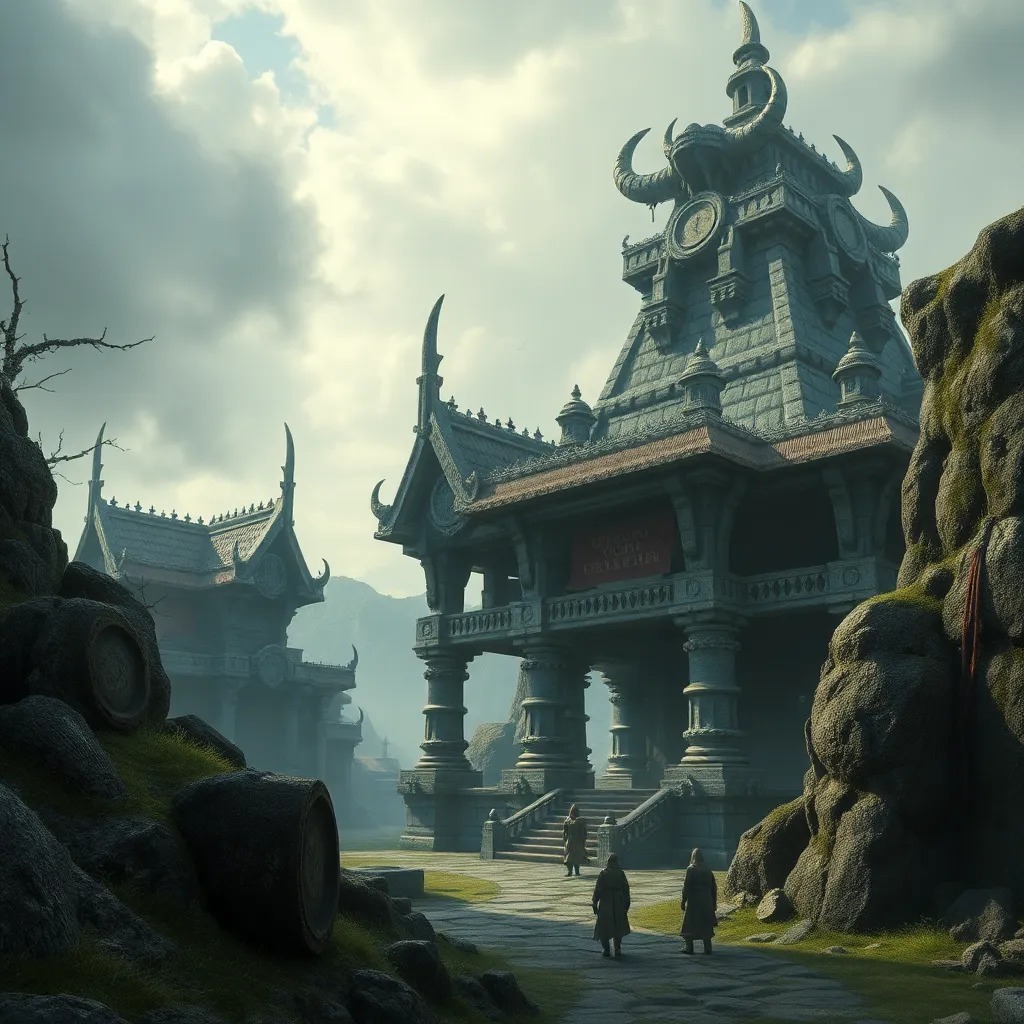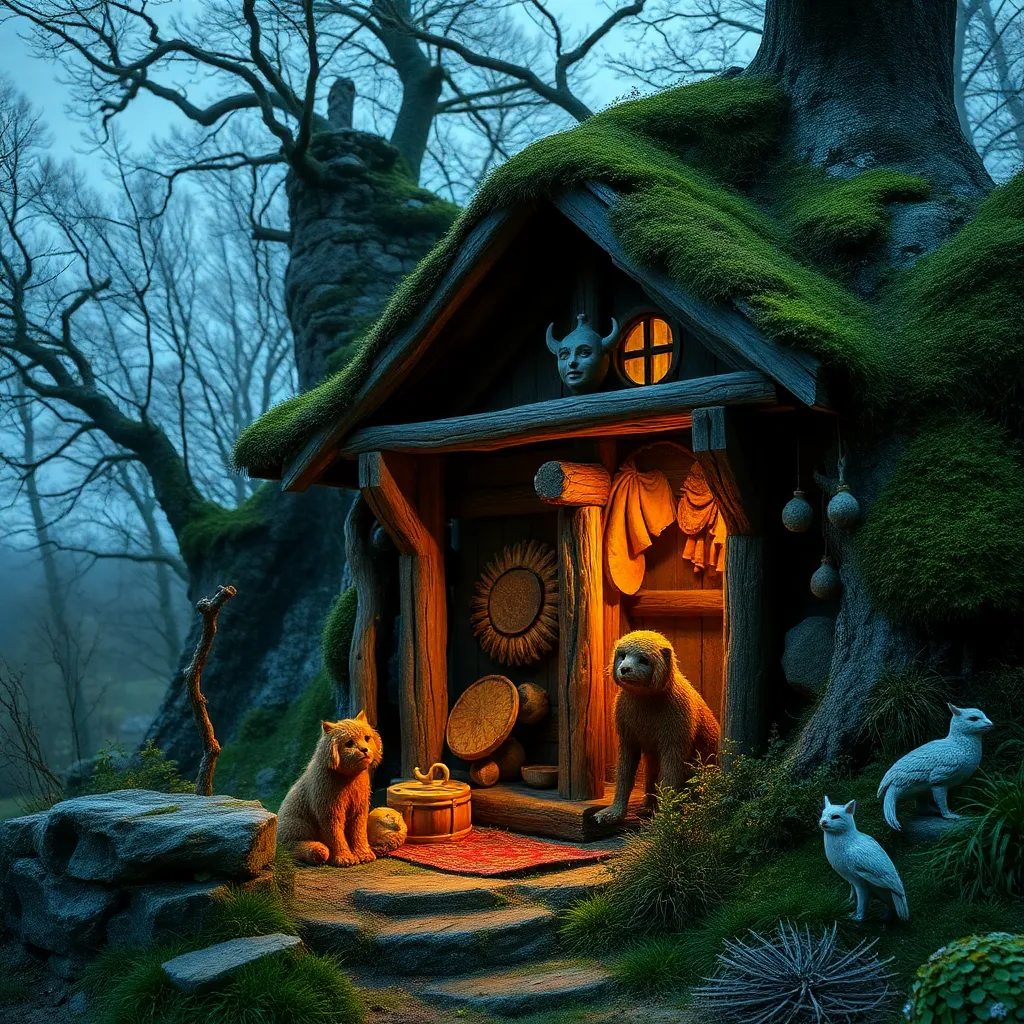Orcish Architecture & Construction: Unveiling the Unique Structures of Orcish Societies
I. Introduction
Orcish architecture refers to the unique building styles and construction techniques employed by Orc societies, characterized by their functionality, durability, and often imposing aesthetics. This architectural form is not merely a matter of structural necessity; it is deeply intertwined with the cultural identity and social values of Orcish communities.
The importance of architecture in Orcish culture cannot be overstated. It serves as a reflection of their way of life, beliefs, and social hierarchies. This article aims to explore the distinctive construction techniques and unique structures within Orcish societies, examining how their architecture shapes and is shaped by their environment and cultural practices.
II. Historical Context of Orcish Architecture
The origins of Orcish building styles can be traced back to their nomadic roots, where temporary shelters were common. As Orcs settled into more permanent communities, their architectural practices began to evolve, influenced by their environment and available resources.
Environmental factors such as the rugged terrains of mountains and forests dictated the materials and methods utilized in their construction. For instance, regions rich in stone led to the development of robust stone structures, while wooded areas favored timber-based construction.
The evolution of architectural practices over time showcases a shift from simple, utilitarian designs to more complex structures that reflect the social hierarchy and community values within Orcish culture.
III. Materials and Techniques in Orcish Construction
Orcish construction is marked by the use of readily available materials, which vary based on geographical location. The primary materials include:
- Stone: Utilized for fortifications and strongholds, stone is a staple in Orcish architecture due to its durability.
- Wood: Often used for residential and communal structures, wood is favored for its abundance in forested areas.
- Metal: Employed primarily in structural reinforcements and decorative elements, metalwork showcases the Orcs’ craftsmanship.
Traditional construction techniques reflect the Orcs’ resourcefulness and adaptability:
- Stone masonry: This technique involves shaping and fitting stones together to create strong walls and fortifications.
- Timber framing: A method that uses wooden frames to support structures, allowing for spacious interiors.
- Earthen structures: Constructed using mud and clay, these structures offer insulation and are often found in more temperate climates.
IV. Key Architectural Features of Orcish Structures
Orcish architecture is characterized by several unique design elements:
- Thick walls: Designed for defense, Orcish buildings often feature thick, robust walls capable of withstanding sieges.
- Low ceilings: Many structures have low ceilings, creating an intimate space that emphasizes strength over grandeur.
- Natural integration: Buildings are often constructed to blend with the natural landscape, using local materials and topography.
While functionality is a primary concern, aesthetic considerations also play a role. Orcish architecture often incorporates symbolic elements, such as tribal motifs and carvings that reflect their culture and beliefs.
V. Notable Orcish Structures and Settlements
Throughout Orcish history, several notable structures have emerged:
- Famous Orcish fortresses: Strongholds such as Grommash Hold and Orgrimmar serve as prime examples of Orcish military architecture, showcasing formidable walls and strategic placements.
- Residential structures: Orcish homes are typically communal, built around a central gathering space, emphasizing the importance of community.
- Sacred sites: Locations such as the Valley of Trials are architecturally significant, often featuring altars and structures dedicated to Orcish deities.
VI. The Role of Orcish Architecture in Society
Orcish architecture reflects the social hierarchy and community values inherent in their societies. Larger, more elaborate structures often signify the status of their inhabitants, while communal spaces reinforce the Orcish emphasis on unity and cooperation.
The relationship between architecture and Orcish identity is profound. Buildings are not merely functional; they serve as symbols of strength, resilience, and cultural heritage. Orcish architecture also plays a vital role in defense, with fortifications designed to protect communities from external threats.
VII. Comparisons with Other Races’ Architecture
When comparing Orcish architecture to that of other races, several distinctions and similarities emerge:
- Distinctions with Elven architecture: Unlike the delicate, organic designs of Elven structures, Orcish buildings tend to be more robust and utilitarian.
- Similarities with Dwarven techniques: Both Orcs and Dwarves utilize stone extensively, but Dwarven architecture often features intricate detailing, whereas Orcish design favors simplicity and strength.
- Influence of human architecture: As Orcs interacted with humans, certain architectural elements were adopted, leading to a hybridization of styles.
VIII. Conclusion
In summary, Orcish architecture is a fascinating study of resilience, functionality, and cultural identity. Its unique construction techniques and structures not only reflect the Orcs’ practical needs but also their rich heritage and societal values. The lasting impact of Orcish architecture can be seen in various fantasy cultures, influencing perceptions and representations of Orc societies in literature and games.
As we continue to explore the intricacies of Orcish architectural practices, future studies may reveal even deeper connections between their built environment and the cultural narratives of strength and community that define Orcish identity.



